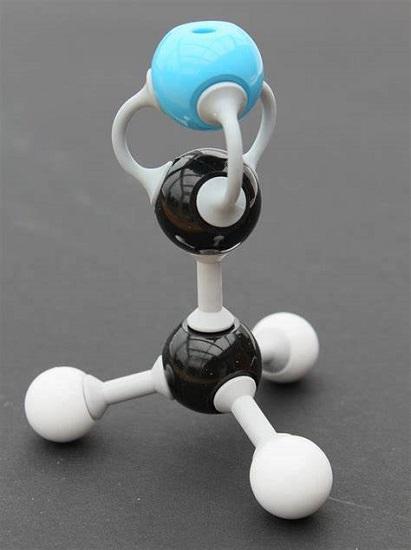Acetonitrile is a common organic solvent. In reversed-phase liquid chromatography analysis, acetonitrile-water acts similarly to methanol-water and is often used as the mobile phase. Obviously, acetonitrile is a polar solvent similar to methanol. Acetonitrile is generally considered miscible with water under any conditions.

With the deepening of scientific research, people’s understanding of many so-called conclusions will become increasingly perfect. This article summarizes the results of critical learning in this open environment, and lists the experimental conditions that can cause phase separation of acetonitrile-water homogeneous solutions, as well as four related extraction methods: acetonitrile salting-out extraction and acetonitrile sugar-precipitating extraction. , acetonitrile low-temperature extraction method and solvent-induced phase change extraction method, etc. The scattered acetonitrile-based extraction methods in the literature are summarized and shared with everyone to improve the knowledge system of acetonitrile properties, with a view to applying these properties to everyone’s practical work.
1 Several situations in which acetonitrile and water are immiscible
1.1 Salt and acetonitrile-water system
In a uniform and transparent solution composed of acetonitrile and water, add With an appropriate amount of inorganic salt or organic salt, phase separation between acetonitrile and water will be seen. Since the density of acetonitrile is smaller than that of water, the upper phase is an acetonitrile-rich phase (containing a small amount of water), and the lower phase is an acetonitrile-poor phase (mainly water). This salt-induced phase separation of acetonitrile is called salting out of acetonitrile. The addition of salt produces a strong hydration effect, and the salt binds more water molecules, significantly reducing the number of free water molecules that can interact with acetonitrile, resulting in phase separation. In this way, substances originally dissolved in the water phase can be extracted into the acetonitrile-rich phase during the phase separation process. This extraction method is called acetonitrile salting out extraction. The salts used as phase separation initiators mainly include: sodium chloride, calcium chloride, zinc sulfate, ammonium sulfate, magnesium sulfate, tetrabutylammonium perchlorate, etc. The type of salt will affect the extraction recovery rate. It should be pointed out that organic solvents that can produce phase separation under the induction of salt in solutions that are originally miscible with water are not limited to acetonitrile, but also have such properties such as ethanol, isopropyl alcohol, acetone, etc. However, since acetonitrile as the matrix of the sample can be well matched with the acetonitrile-based mobile phase for subsequent reversed-phase liquid chromatography analysis, the acetonitrile salting-out extraction method is particularly favored by people.
1.2 Sugar and acetonitrile-water system
In 2008, Wang from the University of Illinois reported a phase separation phenomenon between acetonitrile and water caused by sugar. When monosaccharides (glucose, xylose, arabinose or fructose) or disaccharides (sucrose or maltose) are added above a certain threshold to an acetonitrile-water solution, significant phase separation is seen. Polysaccharides do not have such properties to induce phase separation. Other commonly used organic solvents that are miscible with water (such as methanol, ethanol, n-propanol, isopropanol, acetone) do not have such a property of phase separation from water triggered by sugar. After phase separation, the upper phase is an acetonitrile-rich phase, and the lower phase is an acetonitrile-poor phase. The extraction method based on this phenomenon is called acetonitrile sugar extraction.
1.3 Low temperature and acetonitrile-water system
In 1999, Yoshida and his colleagues reported a phenomenon of phase separation of acetonitrile and water induced by low temperature. When a solution of acetonitrile and water (volume ratio: 1:1) is placed in an environment of -20 °C for 20 minutes, phase separation of acetonitrile and water will be observed. The extraction method based on this phenomenon is called acetonitrile low-temperature extraction. Generally, the temperature at which phase separation occurs is controlled to be -40°C to -40°C, because the melting point of acetonitrile is -45°C. Within the experimental temperature range, the acetonitrile-rich phase is a liquid phase, while the water-rich phase is mostly a solid phase. Experiments have confirmed that most common organic solvents that are miscible with water at room temperature do not have the ability to phase separate from water at low temperatures. Compared with the other two acetonitrile-based extraction methods, the acetonitrile low-temperature extraction method does not require the introduction of a third-party phase initiating reagent, so the system is relatively simple and will not cause pollution to subsequent separation and analysis work. In addition, low-temperature extraction also avoids chemical changes in temperature-sensitive molecules caused by higher temperatures, making the analysis results more reliable.
1.4 Hydrophobic solvent and acetonitrile-water
In the homogeneous acetonitrile-water system, add a hydrophobic and acetonitrile-miscible organic solvent (such as chloroform, dichloromethane, toluene ) can induce phase separation in the acetonitrile-water system, and the extraction method based on this is called solvent-induced phase change extraction.
2. Conclusion
“Are acetonitrile and water miscible under any conditions?” This question seems to be very simple, and the conclusion has long been given in existing textbooks. But now with the rapid development of information technology, we can more easily access literature and update knowledge content with the times.


